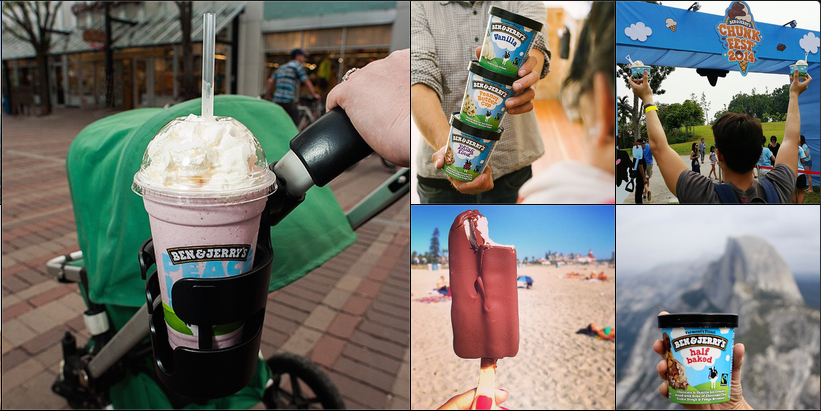If you were looking forward to artisanal, bespoke, small batch toilet paper that is “hand-pulped and hand-perforated” and “genuinely tree-to-toilet,” we have some bad news: It’s April 1. However, it’s most likely, like Portlandia’s handcrafted artisanal lightbulbs, that you had a hunch something wasn’t quite right. And that, in a nutshell, is the gist of April Fools’ content in 2016: Consumers are in on the joke and can play along.
But pranksters shouldn’t despair. Prankvertising still has a time and place – just not on April 1 anymore.
Fool Me Once…
On April 1, 1996, Taco Bell issued ads in several major newspapers, along with a press release saying it had purchased the Liberty Bell to help ease the national debt and henceforth this national treasure would be known as the Taco Liberty Bell, resulting in thousands of calls to the National Park Service, including staff aides for senators from New Jersey and Nebraska. Twenty years later, the world is a different place. With every minute holiday, brands roll out content, like Pizza Hut on Pi Day, IHOP on National Pancake Day and Moleskine on National Handwriting Day, meaning consumers in 2016 are not only savvier and have more resources at their disposal to debunk brand hoaxes, they’ve also been desensitized and are more suspicious this time of year. Look at recent stories about the Pepsi Light Dumbbell Bottle and the Jurys Inns Hotels duvet suit. Both immediately raise red flags even though the brands/agencies reportedly insisted they were not pranks – although the Pepsi agency later confirmed the bottles were never manufactured or distributed.
Both immediately raise red flags even though the brands/agencies reportedly insisted they were not pranks – although the Pepsi agency later confirmed the bottles were never manufactured or distributed. Even Chipotle selling hamburgers seems fishy, but the brand filed a trademark for “Better Burger,” so it may be legit. And when Amazon Dash, the branded Wi-Fi connected devices that enable consumers to reorder items with the press of a button, was announced on March 31, 2015, the branded in-home effort seemed so outlandish, it also generated April Fools’ skepticism. (Although what a difference a year makes as Amazon is now garnering praise for the release of Amazon Dash for condoms.) So with consumer skepticism at an all-time high in 2016, is it possible to pull off branded April Fools’ executions anymore?
I Pity The Fool
Brands still try – in part because pranks retain a certain appeal. If executed properly, they can attract huge attention – like the Devil Baby Attack for the movie “Devil’s Due”, for example, which has nearly 53 million views to date on YouTube alone. However, it’s worth noting this video debuted in January 2014, not April.
Last year, Momentology looked at how brands can successfully prank consumers and found branded pranks typically fall into one of three categories — funny and quirky; warm and fuzzy; and scary and/or mean – like Ford Mustang Speed Dating for Valentine’s Day 2015, WestJet’s 2013 Christmas Miracle and Budweiser’s Blind Taste Test, which debuted during New York City Beer Week in March 2015. In other words: None of these pranks were for April Fools’ Day, which means they were carried out when consumers weren’t necessarily expecting them.
What A Fool Believes
There’s another reason brands continue to roll out April Fools’ efforts in the digital era. These well-meaning pranks not only humanize the brands behind them, they also help forge meaningful connections with consumers who then have a new point of reference. However, instead of tricking consumers as Taco Bell was able to do, there’s been a shift toward simply surprising and delighting them. In other words, branded April Fools’ campaigns in recent years are easily recognizable, which let consumers in on the jokes, so they can laugh alongside brands. Case in point: There’s the HondaHAIR in-vehicle hair-grooming tool, the BMW P.R.A.M., or Postnatal Royal Auto Mobile, and the Learn How to Bark at Your Dog e‑Learning Course from Groupon.
“It’s funny enough to share and silly enough to identify as a prank,” said Tracy Willis, content strategist at creative marketing agency N2Q Consulting, of the Groupon prank. Indeed, Scott Hamula, associate professor and chair of the Department of Strategic Communication at the Roy H. Park School of Communications at Ithaca College, said pulling off a prank can mean either “the traditional, ‘Ah, ya got me!,’ which is very difficult to do,” or, “Oh, that’s awesome.” Further, Hamula adds, “With everyone expecting something on April 1, it’s more likely that a brand will be successful at this second approach, mainly, creating an unexpected, super-cool April Fools’ prank-like idea, flawlessly executing it in a 360-degree way…with the result being the audience gets a satisfying experience without the ‘gotcha’ moment.” It also helps to tie a prank-like idea to a predominant cultural theme, like BMW did with the royal baby or Scope did with its bacon mouthwash “for breath that sizzles” in the bacon-crazed era that was 2013.
Foolhardy
And that’s precisely what brands are doing for April 1, 2016. Quilted Northern’s Rustic Weave https://www.youtube.com/watch?v=vRlBtabKRFM&feature=youtu.be Toilet paper brand Quilted Northern, for example, is the company behind the aforementioned artisanal, bespoke toilet paper, Rustic Weave. “This handcrafted, small-batch product will be unlike anything on the market today and establishes the brand as an unlikely entrant into the craft space,” the brand says. “The demand for simple, handcrafted, heritage products is stronger than ever, but no toilet paper satisfies this growing sector.” Rustic Weave is part of Quilted Northern’s Designed to be Forgotten campaign, of which Jason Ippen, senior brand director at parent company Georgia-Pacific says, “The best bathroom experience is one you don’t remember.” Designed to Be Forgotten aims to introduce the brand to younger consumers, so it includes humorous takes on how hard the brand works to create a product consumers don’t remember. In fact, Ippen calls Rustic Weave a “funny little riff” on the craft movement as the brand seeks to inject itself into conversations and reinforce its messaging. “I don’t think anyone will be surprised by this video,” Ippen said. “We’re joking around…this is a fun way to engage consumers and personify our brand and build on the personality we’ve built out over the course of the last year.” Esurance’s Election Insurance
Similarly, in a video and press release, insurance company Esurance says it will offer a homeowners policy, Election Insurance, to protect abandoned homes for four years while homeowners flee after the presidential election. “Every four years, we hear from countless dissatisfied Americans who threaten to leave the country if the ‘wrong’ candidate is elected into office,” said Alan Gellman, chief marketing officer at Esurance, in the release. “This year…if your preferred candidate loses the election, Esurance will protect your home so you can move out of the country worry free.” Per Esurance, homeowners can choose between standard policy options that include weekly home maintenance and premium options like “holiday overachiever,” in which “your holiday lights and yard décor will keep up with the Joneses.” The video and press release also come with a clear disclaimer that note “Election Insurance is not available in any states.” The Zebra’s In-Car Selfie Prevention Alarm
For its part, car insurance comparison startup The Zebra says it is releasing a fake commercial for a fake product called ICSPA, or the In-Car Selfie Prevention Alarm, which “detects vanity” in cars and activates a smartphone kill switch if vanity exceeds certain levels. “It’s funny and very tongue-in-cheek as it mocks selfie-obsessed people,” said Alyssa Connolly, manager of communications strategy. “However, we ultimately drive toward a purposeful message to raise awareness of distracted driving. We’ve built a fake website for the fake product and written a blog post about distracted driving that round out the elements of the campaign.” Ibex Outdoor Clothing’s Dog Fur Fiber
http://player.vimeo.com/video/122576478Riffing off of the Ibex promise to source the finest fiber on the planet and pulling in the brand’s dog culture, Social Media Manager Evan Kay says the idea of Ibex’s D.F.F., or Dog Fur Fiber, was born for an April Fools’ execution in 2015. The brand took advantage of one of its partners visiting from New Zealand earlier that year and used his accent and fiber expertise to add credibility to the story, Kay said. The brand also created a ton of content, including an Ibex-branded D.F.F. logo, new product SKUs, fake fabric labels, an email campaign and fake product pages on the website. In addition, YouTube and Facebook received new cover photos, Ibex sent out an embargoed press release and it ran a live Periscope on the 1st.
It also sent D.F.F. product to five influential outdoor media editors a week prior. “This in my opinion was key, because on April 1, you’re competing against everyone else in your market,” Kay said. “If you can get in front of the key influencers beforehand, it’s going to make your campaign that much more successful.” As a result, Kay says the brand generated a ton of exposure that lasted for weeks, converted new customers, brought in a lot of revenue, and it fooled a lot of people, including “a fiber specialist from Patagonia who sent our CEO a concerned email.”
However, Kay also notes the goal wasn’t to really fool consumers per se. “We put a lot of hints in the video to demonstrate that it was joke. For instance, one of the fake fabrics was a cross between 50 percent shih tzu and 50 percent bulldog, or bullshit,” Kay said. “The other was when we discussed the side effects, ‘cleaning with your own saliva’ and ‘it retains odor very, very well.’ We created it with the mindset that some people would fall for it, and, yes, it would be a good way to engage with our customer. Our customer service had a great time talking to people on the phones.” So perhaps the final lesson here is that if you’re going to attempt a branded April Fools’ execution, you’d better back it up with a lot of content, whether or not you expect consumers to believe it.
“If you can get in front of the key influencers beforehand, it’s going to make your campaign that much more successful.” As a result, Kay says the brand generated a ton of exposure that lasted for weeks, converted new customers, brought in a lot of revenue, and it fooled a lot of people, including “a fiber specialist from Patagonia who sent our CEO a concerned email.” However, Kay also notes the goal wasn’t to really fool consumers per se. “We put a lot of hints in the video to demonstrate that it was joke. For instance, one of the fake fabrics was a cross between 50 percent shih tzu and 50 percent bulldog, or bullshit,” Kay said. “The other was when we discussed the side effects, ‘cleaning with your own saliva’ and ‘it retains odor very, very well.’ We created it with the mindset that some people would fall for it, and, yes, it would be a good way to engage with our customer. Our customer service had a great time talking to people on the phones.” So perhaps the final lesson here is that if you’re going to attempt a branded April Fools’ execution, you’d better back it up with a lot of content, whether or not you expect consumers to believe it.
So perhaps the final lesson here is that if you’re going to attempt a branded April Fools’ execution, you’d better back it up with a lot of content, whether or not you expect consumers to believe it.


